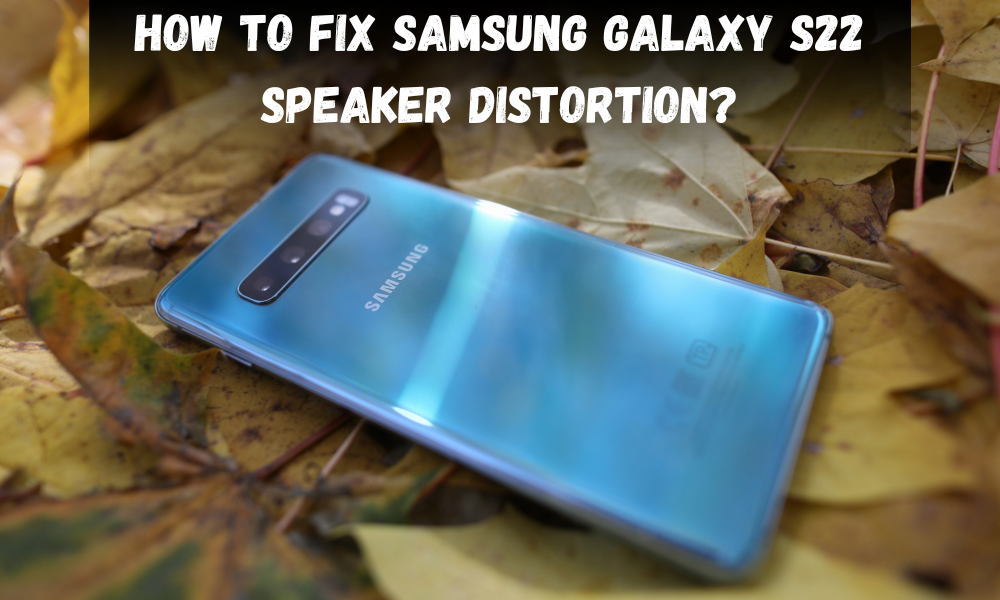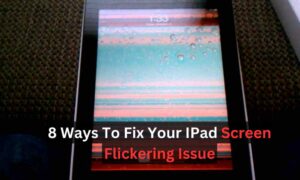The Samsung Galaxy S22 boasts impressive audio capabilities, but encountering speaker distortion can be a frustrating experience. In this comprehensive guide, we’ll delve into the common causes of speaker distortion on the Samsung Galaxy S22 and provide step-by-step solutions to address the issue and restore optimal audio performance.
Speaker Distortion
Speaker distortion refers to any unwanted changes or alterations in sound quality produced by the device’s speakers. It can manifest as crackling, buzzing, popping, or muffled sound, detracting from the listening experience. Speaker distortion can be caused by various factors, including hardware issues, software glitches, or environmental factors.
Common Causes of Speaker Distortion
Dust and Debris: Accumulation of dust, dirt, or debris on the speaker grille can obstruct sound output and lead to distortion.
Excessive Volume Levels
Playing audio at high volume levels for extended periods can cause the speaker components to strain, resulting in distortion.
Software Glitches In Samsung Galaxy S22
Software bugs or conflicts within the device’s operating system may affect audio processing and lead to distortion.
Audio Equalizer Settings In Samsung Galaxy S22
Incorrectly configured equalizer settings or audio enhancements can alter sound output and cause distortion.
Hardware Damage Can Cause Samsung Galaxy S22 Speaker Distortion
Physical damage to the speaker components or loose connections may impair sound quality and lead to distortion.
Troubleshooting Speaker Distortion
Clean the Speaker Grille
Use a soft brush or compressed air to gently clean the speaker grille and remove any dust or debris that may be obstructing sound output.
Adjust Volume Levels
Lower the volume on your Samsung Galaxy S22 to see if reducing the volume level alleviates the distortion.
Restart Your Device
Perform a soft reset by powering off your device and then turning it back on to see if a temporary software glitch is causing the distortion.
Check for Software Updates
Ensure that your device’s software is up to date by checking for and installing any available updates in the Settings menu.
Disable Audio Enhancements
Turn off any audio equalizer settings or enhancements in the sound settings menu to see if they are contributing to the distortion.
Test in Safe Mode
Boot your device into safe mode to determine if third-party apps are causing the distortion. If the distortion improves in safe mode, a third-party app may be the culprit.
Reset App Preferences
Resetting app preferences can help resolve any conflicting settings that may be causing distortion. Go to Settings > Apps > More options > Reset app preferences.
Factory Reset
If all else fails, consider performing a factory reset to restore your Samsung Galaxy S22 to its original settings. Before proceeding, ensure to back up your important data as a factory reset will erase all data on your device.
Seeking Professional Assistance
If the speaker distortion persists after attempting the above troubleshooting steps, it may indicate a hardware issue.
Contact Samsung Support
Reach out to Samsung’s customer support for further assistance and guidance on troubleshooting speaker distortion or professional mobile repair assistant.
Visit a Service Center
Consider visiting a certified Samsung service center or authorized technician for a comprehensive diagnosis and repair of any hardware-related issues.
What Causes Speaker Distortion?
Speaker distortion, often an unwelcome auditory phenomenon, arises from a myriad of factors spanning hardware, software, and environmental influences. Understanding these intricacies can shed light on why our speakers sometimes produce less-than-desirable sound, empowering us to address the issue effectively. At its core, speaker distortion occurs when the audio signal delivered to the speaker doesn’t faithfully reproduce the original sound waveform. Instead, various aberrations manifest, altering the sound quality. Let’s delve into the depths of speaker distortion to unravel its complexities.
Hardware Factors
Overloading
Pushing the speaker beyond its capabilities by playing audio at excessively high volume levels can cause the speaker components to exceed their designed limits. This overload results in nonlinear behavior, where the speaker fails to accurately reproduce the input signal, leading to distortion.
Physical Damage
Damage to the speaker’s components, such as the cone, voice coil, or suspension system, can compromise its ability to faithfully reproduce sound. Tears or punctures in the speaker cone, for example, can introduce irregular vibrations, distorting the sound output.
Loose Connections
Poor connections between the speaker components or with the device’s circuitry can introduce impedance mismatches or erratic signal transmission, contributing to distortion.
Speaker Design
Certain speaker designs may inherently exhibit distortion due to limitations in their construction or materials. For instance, cheaper speakers with lower-quality components may struggle to accurately reproduce sound, leading to distortion at higher volumes.
Software Influences
Signal Processing
Digital signal processing (DSP) algorithms employed in audio playback systems can inadvertently introduce distortion if not implemented correctly. Errors in the DSP algorithms or signal path can result in nonlinear distortion, altering the sound output.
Audio Equalization
Incorrectly configured equalizer settings or audio enhancements can distort the sound by boosting certain frequency ranges excessively or introducing unwanted artifacts.
Software Bugs
Software glitches within the device’s operating system or audio playback software can disrupt the audio signal processing chain, leading to distortion.
Environmental Factors
Acoustic Reflections
The acoustic properties of the room or environment in which the speakers are placed can influence sound quality. Reflections off walls, ceilings, or furniture can create interference patterns, leading to phase cancellation and distortion.
Electromagnetic Interference (EMI)
Proximity to electromagnetic sources such as power cables, transformers, or electronic devices can introduce unwanted electrical noise into the audio signal path, resulting in distortion.
Temperature and Humidity
Extreme temperatures or humidity levels can affect the mechanical properties of speaker components, altering their performance and potentially causing distortion.
Addressing speaker distortion often involves a combination of troubleshooting steps to identify and mitigate the underlying causes. Cleaning the speaker components, adjusting volume levels, checking for software updates, and optimizing speaker placement in the environment can all contribute to reducing distortion and improving sound quality.
Conclusion
Speaker distortion on your Samsung Galaxy S22 can detract from the overall audio experience, but with the right troubleshooting steps, it can be effectively resolved. By following the solutions outlined in this guide, you can identify and address the root cause of speaker distortion and restore optimal sound quality on your device. If you’re unable to resolve the issue on your own, don’t hesitate to seek professional assistance from Samsung support or authorized service centers for further guidance and repair.




